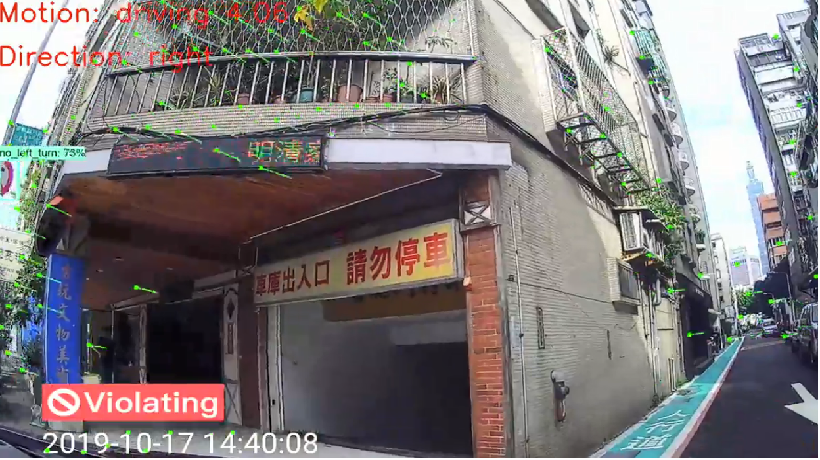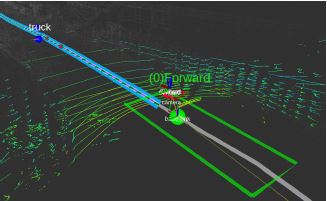Excellent Prospects for Fleet Management and Transportation Following The Emergence of AI Image Recognition and Autonomous Driving Technologies
2/17/2020

Interview with Dr. Chun-Ting Chou, CEO, OmniEyes & Dr. Kang Li, Founder and Technology Consultant, iAuto Technolog
Introduction
The fleet and transportation industry has long been developing rapidly in terms of informatization and mobilization. In recent years, the emergence of AI technology has bolstered the industry’s smart development. Fleet management and transportation employing AI image recognition and applications incorporating unmanned autonomous driving have all become feasible, ushering in a new era in the logistics sector.
As speed and safety are the two major elements in upgrading transportation performance, many large-sized transportation operators started incorporating electronic and mobile systems more than 10 years ago. In recent years, they have further utilized cloud, AI and 5G technologies to build smart applications, accurately managing their fleets and monitoring driver behavior while improving delivery efficiency and driving safety.
In-vehicle AI accelerates transportation development
Advantech iLogistics team and ecosystem (Intel, OmniEyes, iAuto) are positioned to offer total solutions to overcome smart transportation challenges and offer value for business owners. Advantech co-worked with Intel and develop TREK-676 which is the next generation, intelligent, rugged, and modular computer box for surveillance and fleet management. TREK-676 embedded AI module Intel® Movidius™ Myriad™ X VPU onboard with OpenVINO™ toolkit, enables vehicle, license plate recognition. Intel® Movidius™ VPUs drive the demanding workloads of modern computer vision and AI applications at ultra-low power. By coupling highly parallel programmable compute with workload-specific hardware acceleration, and co-locating these components on a common intelligent memory fabric, Intel® Movidius™ achieves a unique balance of power efficiency and high performance. “Based on the powerful TREK-676 in-vehicle computers, domain focus SI can develop diversified AI solutions for logistics and transportation, said OmniEyes CEO Dr. Chun-Ting Chou.
OmniEyes solutions enables edge computing of telematics equipment, providing vehicles with AI capability for diverse smart applications. Systems can automatically detect vehicle status and identification of traffic signage, which can then be combined with traffic regulations to evaluate driver behavior. Dr. Chou noted that if a driver turns into a street clearly marked with no-entry signs, or fails to stop for pedestrians using crosswalks, related image data is sent to the fleet management staff for record-keeping and management purposes as well as to the drive as an at-scene waring.
The aforementioned transportation applications require the support of edge computing. Chou explained that the amounts of image data collected by telematics systems are enormous, and pose a heavy burden on network bandwidth and system platforms when constantly uploaded to the cloud for real-time computing. In fleet management, demand for real-time data processing is high. That is why OmniEyes will need powerful edge computing like TREK-676 as a crucial element in smart transportation systems.
However, there are certain challenges when implementing edge computing in telematics systems. First, the vehicle, with limited space, must be equipped with a processing architecture that boasts strong computing capability. Second, software programs able to recognize road conditions and traffic signage have to be developed. Third, terminal equipment with sufficient computing capability must be available to strengthen the operating performance of the entire system, so that it can assume smart attributes at an accelerated pace.
Smart transportation driven by autonomous driving technologies
Besides performance enhancement in telematics systems, autonomous driving is another major trend in smart transportation. iAuto Technology Founder and Technology Consultant Dr. Kang Li pointed out that large-sized transportation firms have gradually moved toward autonomous driving over the past few years, but current development conditions suggest that there are still many obstacles to be overcome. This is why Advantech has been striving to create an IoT ecosystem.
iAuto based on autonomous technologies like LiDAR apply to fleet management and transportation. LiDAR which provides high-resolution, three-dimensional information about the surrounding environment can detect the position of people and objects around the vehicle and assess the speed and route at which they are moving. Li added that even though self-driving vehicles can already drive on roads, there is still a long way to go before they can carry passengers and are fully commercialized. In adopting self-driving vehicles in smart transportation systems, a wide range of issues must be addressed. Cooperation among businesses from different domains will be required to develop systems that satisfy actual needs.
In terms of technology, powerful edge computing will be a focus area in system design. TREK-676 in-vehicle computers paired with TREK-13x in-vehicle AI cameras improve real-time driving safety by forward collision, blind spot detection. As to the development of autonomous vehicles, data from vehicles, roads and clouds must be integrated so that these vehicles can first operate in specific fields before operational models can be adjusted and the cars can be adopted in other fields. In such a way, industry ecosystems can work continuously to gradually fulfill the promise of smart fleet management and transportation.



-25/TREK-60_01-_Banner20200818115158.jpg)
